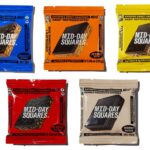Reframing can reinvigorate a category.
When observational consumer research into the world of diapers showed that at around age 2, kids didn’t want to wear diapers anymore, the Kimberly Clark Huggies brand management team wondered how they could reframe their product.
How could we use our innovative absorbency technology but not market these products as diapers to the parents of 2 to 3-year-old kids? They wondered about shifting the category from diapers to something different.
“Let’s reframe the product.” said one wise marketing professional.
The Pull-ups brand team came along as an alternative idea. Eliminate the side tabs and turn them into “diaper underpants” that kids could pull up like the big kids.
Reframing allows you to see a challenge from a novel perspective. Suddenly, you are associating with another category (underpants) but still using the elements of your brand (absorbency).
How can you pull up your brand into a wide-open space?
How To Reframe
There are four ways I advise clients to reframe a product or service.
HOW MIGHT AN OUTSIDER WORK IN YOUR CATEGORY?
I imagine how someone outside of a category would go into the business? It is a valuable way to reframe a category.
How would Disney or Apple go into the car business?
What might McDonald’s or Panera do if they came into apparel?
How would Airbnb or Uber think about your motorcycle brand?
How would an expensive perfume company like Chanel sell wine? I’m confident that Chanel wouldn’t use a standard wine bottle but create an elegant and bespoke glass container.
WHAT MIGHT WE ELIMINATE?
Another way to reframe is through elimination. What could you remove from how others in your category do things? Cirque du Soleil is a circus without animals or ringmasters. Jet Blue eliminates first class and upgrades all the seats. Ikea stops putting the furniture together and delivering. In-and-Out Burgers removed everything but five items from its menu.
WHAT MIGHT WE EMPHASIZE THAT OTHERS IGNORE?
When the shoe designer Louboutin decided to make the soles of his shoes turn red, no one else was thinking about that design element. It became part of his “visual hammer” – a unique way to know it was his brand. He focused on something others ignore.
Calendly created a company with a market cap of a three-billion-dollar company by concentrating on a better way to schedule meetings. No one was hyper-focused on a solution to solve that pain point around scheduling. Who would have thought a better calendaring approach would unlock so much value?
WHO ELSE COULD YOU SERVE THAT OTHERS IGNORE?
Take things that are typically gender-specific – like who makes makeup or beauty products for men, makes building tools that better fit women’s hands, or makes gardening tools for left-handed folks? Machine Gun Kelly, the rapper and singer wears nail polish or lacquer – is there a brand opportunity for products typically sold to women?
Black Rifle Coffee made coffee for veterans, gun lovers, and republicans – in contrast to the rest of the left-leaning coffee industry. Serving a new and often ignored audience can positively narrow your brand. By shifting who you serve, you start to reframe the needs of the category with fresh eyes.
If you use the same language, images, and words as everyone else in your category, you are just a blur. If you can eliminate or refocus attention somewhere else, you have a chance to avoid the herd.
Brands that stand out shift the framing to be different.
What frame are you stuck in?
You can set up a time to chat with me about your marketing challenges using my calendar. Email me jeffslater@themarketingsage.com Call me. 919 720 0995. The conversation is free, and we can explore if working together makes sense. Watch a short video about working with me.
Photo by Sarah Shull on Unsplash





